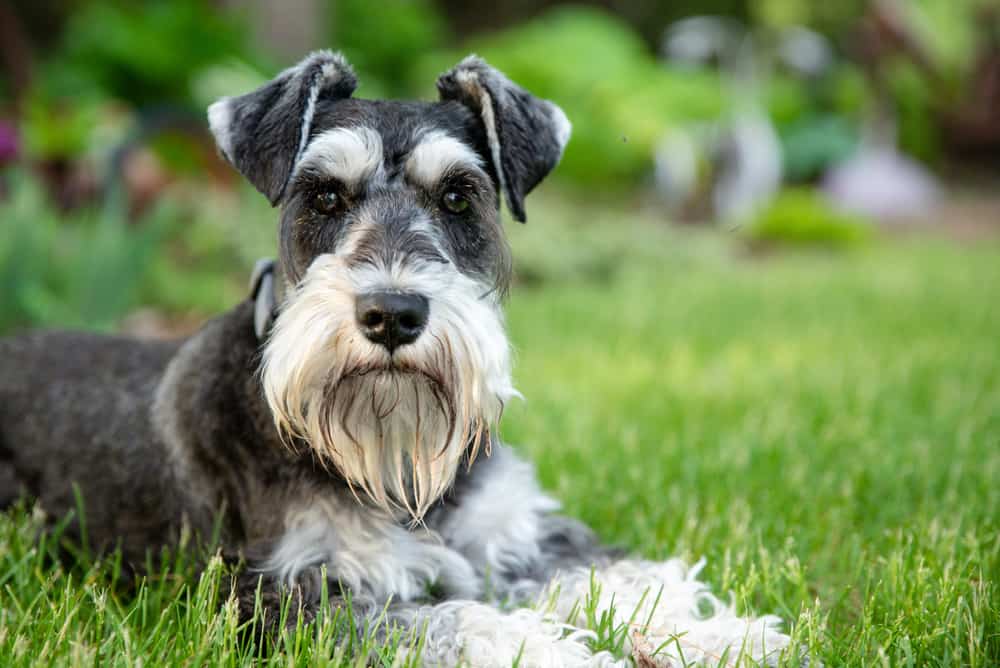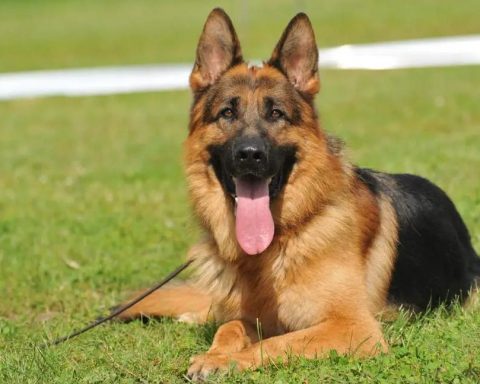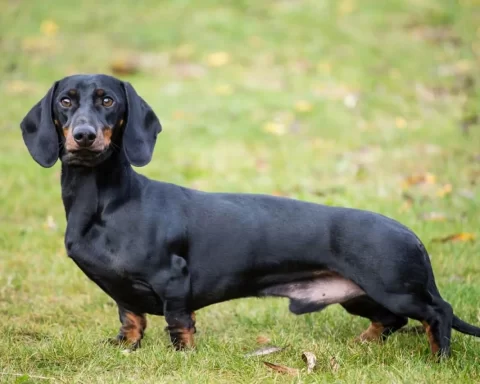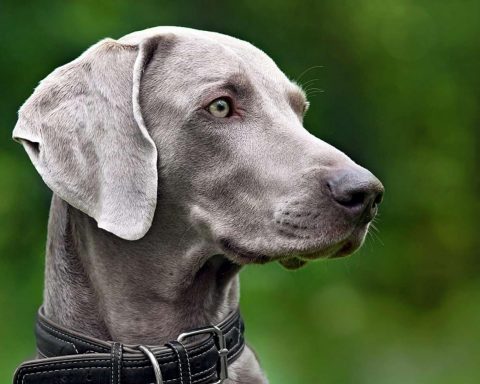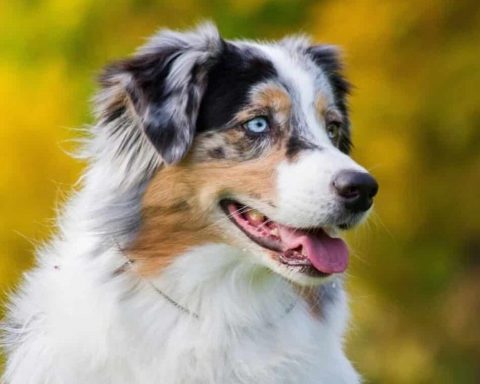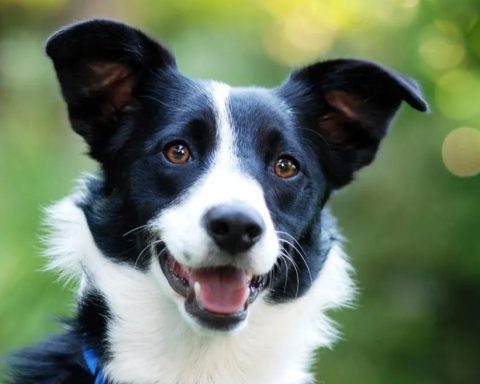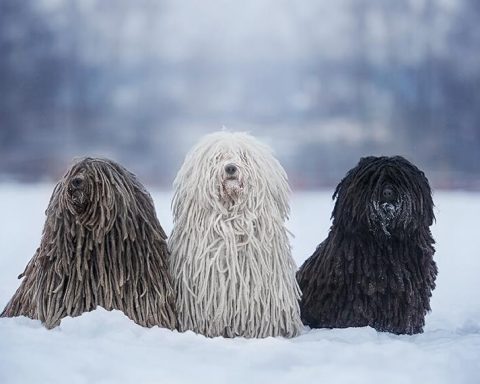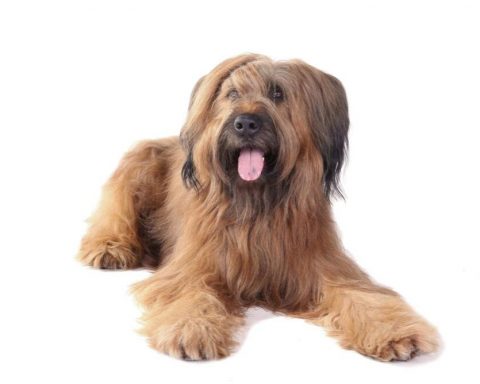summary
Miniature Schnauzers are a type of terrier, they are energetic and lively, their appearance and personality are very similar to their cousins, the Standard Schnauzer, alert and active. Disadvantages: Toy-like, too slender or rough.
Origin
Germany
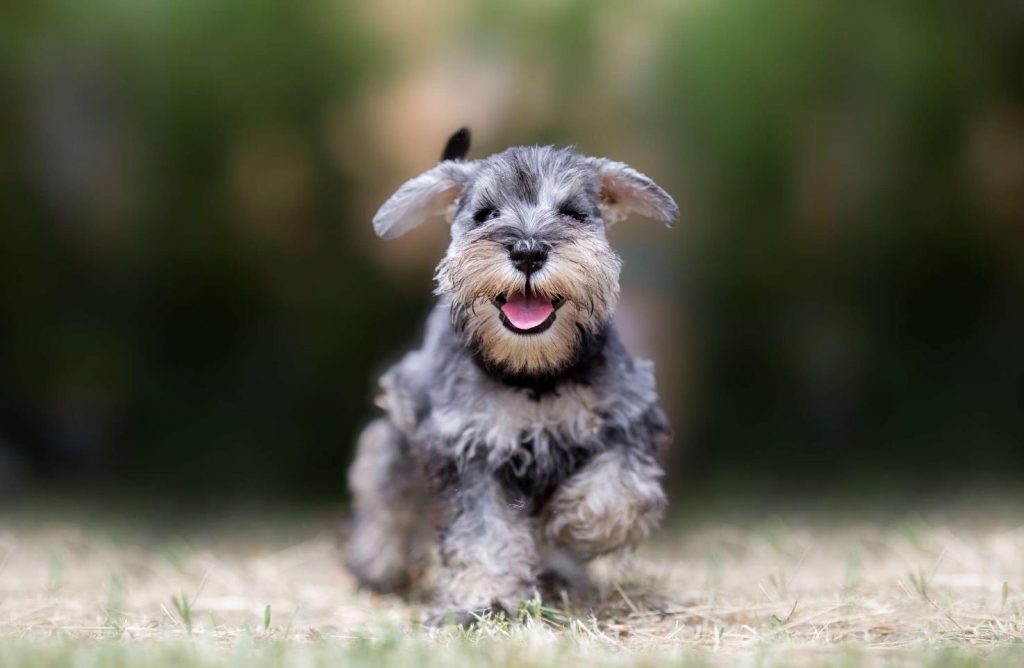
Body type
Shoulder height range is 12 inches to 14 inches. The body is solidly constructed, with a near-square frame, both roughly equal in height and length, with plenty of bone mass, and nowhere appearing like a toy. Out of shape: height below 12 inches or above 14 inches.
Head
Eyes are small, dark brown and deep. The eyes are ovoid and sharp. Defects: Light colored eyes, large eyes, and protruding eyes are defects.
The ears, if trimmed, are of the same shape and length, with an upward pointing angle. Their length is proportionate to the size of the head, and no exaggerated length is allowed. The ears are situated higher on the head, with the inner edge vertically upward and the outer edge may be slightly bell-shaped. If uncut, the ears are small, V-shaped and folded over the top of the head (button ears).
The head is firm and rectangular, with its width tapering from the ears to the eyes to the nose. The forehead is not wrinkled the forehead is flat and fairly long.
The muzzle is parallel to the forehead, with a slight stop, and the muzzle is the same length as the forehead. The muzzle is firm and properly proportioned to the whole head; the muzzle ends in a moderately obtuse angle and there is a thick beard to form a rectangular head profile. Defects: Rough, cheeky head line. Bite is a clipped bite. Defects: protruding upper jaw bite, protruding lower jaw bite, pincer bite.
Neck, Dorsal Line and Body
The neck is firm and slightly arched, perfectly integrated with the shoulders, the skin of the throat is compact and wraps around the neck in just the right way. The body is short and deep, the chest reaching at least to the elbows. Ribs well expanded, of proper depth, backward and united to the short loin.
The dorsal line is straight; it slopes slightly downward from the withers to the root of the tail. The horse’s shoulder rump is the highest point of the body. The length from breast to hip is equal to the height of the pastern. Defects: Breast too wide or not deep enough. Thick back is depressed or arched. Tail root is high in position with the tail held up.
A tail break is required, retaining a length that, when the dog’s coat is of the proper length, is just above the dorsal line.
Defect: Low tail root position.
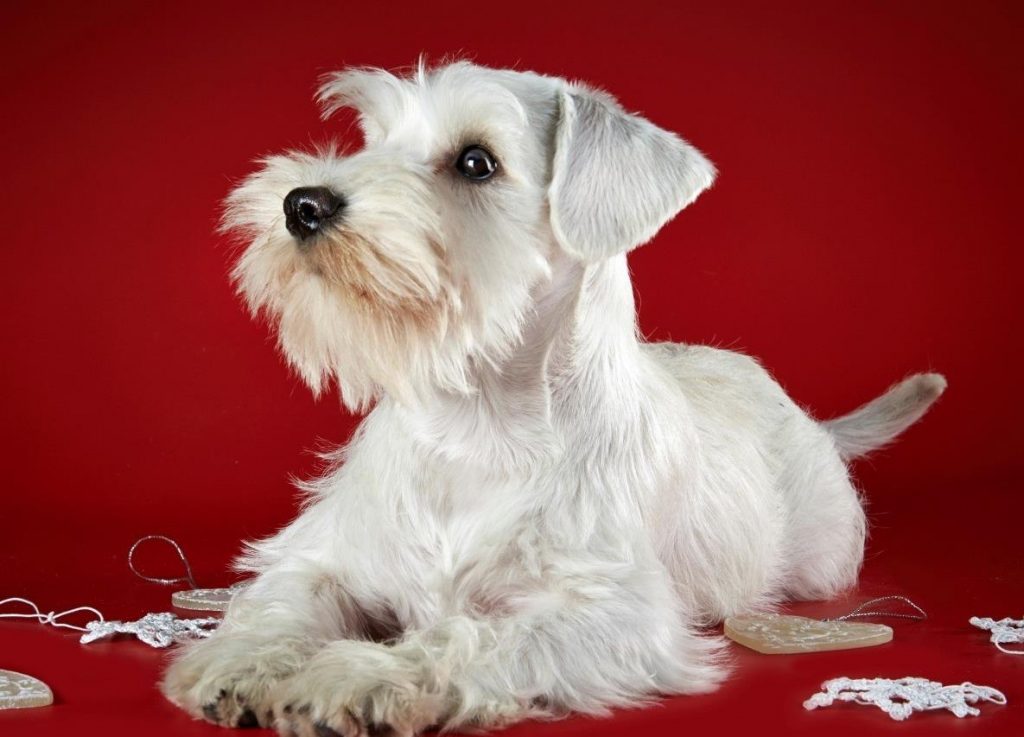
Forequarters
The forelimbs are straight and parallel to each other when viewed from all angles. They have sturdy wrists and ample bone mass. The moderately deep chest is located between the two forelimbs. The elbows are close to the body, defects: loose elbows. The shoulders are sloping, muscular, flat and neat. They are well integrated with the back of the spine so that the lateral side of the scapulae lies just above the elbow. The tops of the shoulder blades are positioned close together.
The scapulae are tilted forward and downward and at the proper angle so that the forelimbs can be extended forward to the greatest extent possible without being constrained. The scapulae and forearms are long, thus permitting sufficient depth of chest. The paws are short and rounded (cat’s foot), with thick, black pads. The toes are arched and compact.
Hindquarters
The hindquarters have muscular, sloping thighs. It is properly angled at the stifle joint. In standard stance, there is enough angle to allow the fly knuckle end to extend beyond the tail. The hindquarters do not appear larger or taller than the shoulders.
The stifle is short, perpendicular to the ground in the standard stance, and parallel to each other when viewed from behind.
Defects: sickle legs, bull limbs, O-shaped legs or bent hind legs.
Coat
Double coat, hard outer bristles and dense undercoat. The head, neck, ears, chest, tail and body need to be stripped. Under competition conditions, the coat on the body must be of sufficient length to reflect the texture of the hair.
Complete coverage of neck, ears and head. The texture is fairly dense, but not silky.
DEFECTS: Coat is too soft or too short, or appears smooth.
Color
Recognized colors are pretzel, black and silver, and solid black. Regardless of the color, the pigmentation of the skin must be very even, meaning that white or pink patches anywhere on the skin are not allowed.
Pretzel Color: The typical pretzel color has a combination of black and white bicolored hair, pure black, and pure white hair, with black and white bicolored hair predominating. A variety of pretzel colors are acceptable ranging from lighter colored light pretzels to darker colored pretzels with shades of brown are allowed. The coat color of a pretzel colored dog gradually overpowers into the following parts in the
Light gray or silvery white: eyebrows, whiskers, cheeks, under the throat, inside the ears, chest, under the tail, lower part of the legs and inside the hind legs. In addition, the underside of his belly might become light-colored as well. However, the light-colored part should not extend to the sides of the body above the elbows.
Black and Silver: The black and silver color is the same style as the pretzel color. It must be solid black where the pretzel color is concerned. The black and silver cape should have a black undercoat inside. Hair that fades into brown needs to be stripped and the undercoat under the belly should be dark.
PURE BLACK: Pure black is the only single color recognized. The ideal color is a very thick black cloak coat and a slightly lighter colored, soft undercoat, which is desirable everywhere. Brown or faded hairs should be stripped. The color of the coat becomes lighter when the parts of the coat are shaved with scissors or electric clippers. Small white patches on the chest or occasional white hairs elsewhere on the body are permissible.
OUT OF CONFORMITY: Pure white or dogs with white streaks, white stains, white patches, except for black dogs with small white patches on the chest. Peppered or black and silver dogs fading in color to light gray or silvery white from the throat and parts of the forechest down. Other natural colors besides.
Gait
Evaluate gait by looking primarily at the gait at a brisk walk. Observing the front limbs from the front, the elbows are close to the body, straight forward, neither outward nor inward. The hind limbs, viewed from behind, are straight and move in the same plane as the corresponding front limbs.
Note that generally after completing a brisk walk, the hind leg will continue to move in the same plane as the front leg, but a slight inward tilt is permissible. Observations from the front need to be made from the point of the shoulder, and observations from the back need to be made from the hip joint. Whether viewed from the front or from behind, the front or hind limbs are vertical from the reference point to the ground.
When the Miniature Schnauzer walks, the legs are tilted inward at such a small angle that it is almost impossible to tell with the naked eye. The toes of the feet cannot be crossed and the elbows cannot be turned out. When viewed from the side, the forelimbs can be fully extended and the hindquarters drive is strong. The foot claws do not turn inward or outward. Defects: single line walk, side step, high front leg lift, paddle step, insufficient hind leg drive.
Temperament
The typical Miniature Schnauzer is courageous and alert, as well as tame. He is very friendly, intelligent and loves to please his owner. Never be aggressive or overly timid.
